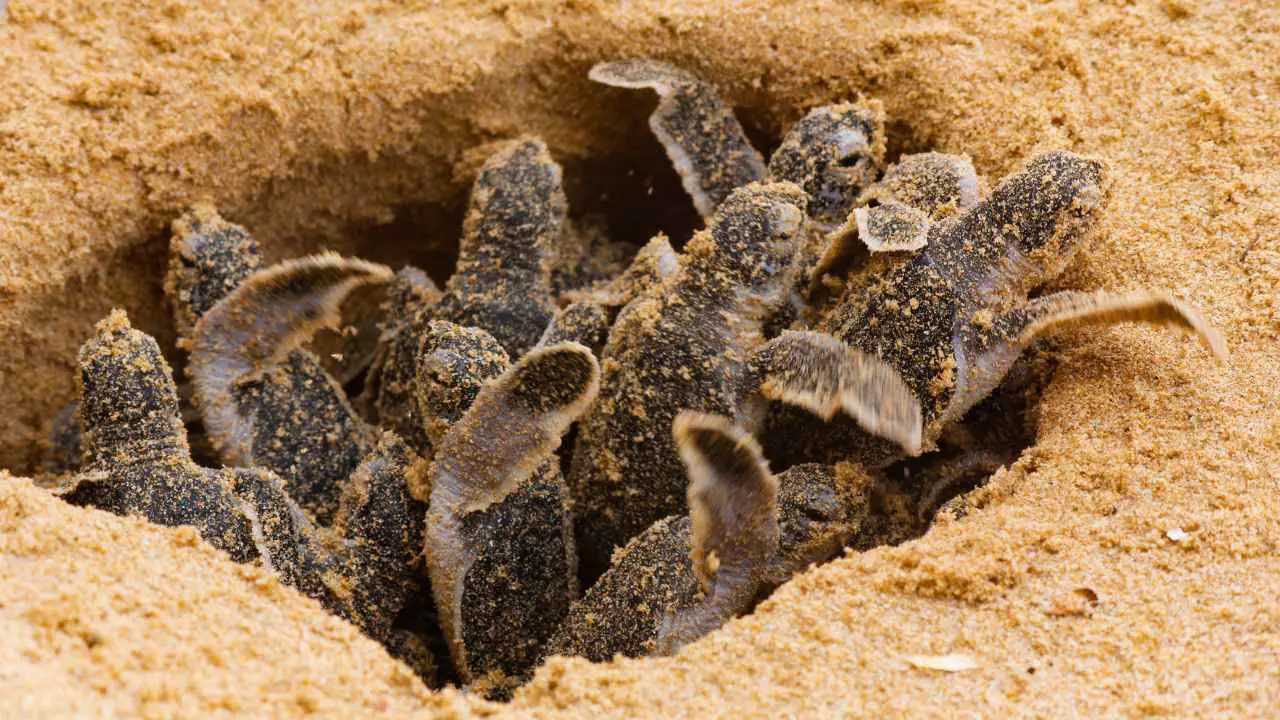Hey there! Let’s chat about baby turtles, or as they’re adorably known, hatchlings. These tiny adventurers start their journey with a scramble to the sea or a cautious peek in their freshwater homes. Just like us, their early days are crucial. Getting the right nutrition isn’t just good-to-have; it’s a must-have for them to grow strong, healthy, and ready to explore their world. Think of it as fueling their tiny engines for the big adventures ahead!
What Do Baby Turtles Eat

1. Types of Baby Turtles
Now, not all baby turtles have the same menu. Depending on their family, they might be munching on different snacks. We’ve got three main types based on their diet:
- Herbivorous Turtles: These little greenies love their veggies. They’re all about leafy greens and algae. A famous face in this category is the Green Sea Turtle. When they’re young, they might snack on some protein, but as they grow, it’s all about plants.
- Carnivorous Turtles: These are the meat lovers of the turtle world. Starting life with a diet that’s all about protein, they feast on things like small insects, worms, and even fish. The Snapping Turtle is a classic carnivore, always on the lookout for a meaty treat.
- Omnivorous Turtles: Can’t decide between greens and proteins? Well, these turtles don’t have to. They enjoy the best of both worlds, balancing their diet between plants and meat. The Red-Eared Slider is a popular example, happily munching on both algae and aquatic insects.
Each type of baby turtle has its unique dietary needs, shaping their growth and lifestyle. Whether they’re vegging out or hunting for a snack, understanding their diet is key to keeping them happy and healthy.
2. Dietary Needs of Baby Turtles
Alright, let’s dive into what fuels these tiny shelled explorers. Baby turtles need a balanced diet packed with vitamins, minerals, and protein to kickstart their growth. Imagine it’s like building a house; they need the right materials (nutrients) to build strong shells and bodies.
Calcium and vitamin D3 are the superstars here. Calcium is like the bricks, crucial for developing a sturdy shell and strong bones. Vitamin D3 is the construction worker, helping their bodies use the calcium effectively. Without enough sunlight or UVB light, our little friends can’t process vitamin D3, making it harder for them to absorb calcium. It’s all about getting that perfect balance to ensure they grow up healthy and ready to take on the world.
3. Foods for Baby Turtles
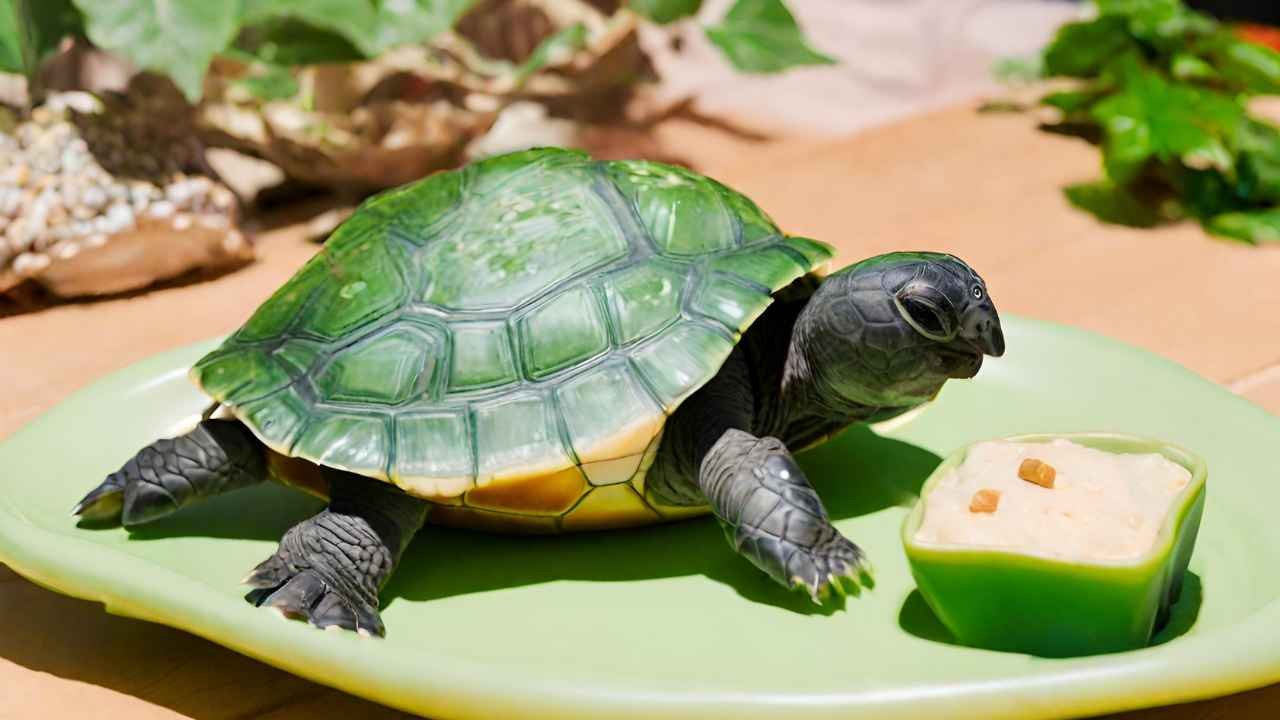
Moving on to the menu for our hatchling friends:
- Carnivorous Turtles: These little predators thrive on a diet of small insects, worms, and aquatic animals. Think of them as the mini lions of the turtle world, hunting down protein-rich snacks like mealworms, bloodworms, and small fish. It’s all about giving them the energy they need to grow and stay active.
- Herbivorous Turtles: These gentle grazers prefer a peaceful meal of leafy greens, vegetables, and fruits. Dandelion greens, kale, and even a bit of apple or melon can make their day. It’s like having a salad bar, ensuring they get all the necessary nutrients without the meat.
- Omnivorous Turtles: For those who enjoy a bit of everything, omnivorous turtles have a varied diet. They’ll happily switch between animal-based and plant-based foods, enjoying a mix of insects, leafy greens, and occasionally some fruit. It’s like they have an all-access pass to the buffet of nature.
- Commercial Turtle Food: Then there’s the convenience of commercial turtle pellets. These are specially designed to provide a balanced diet for baby turtles, packed with all the necessary nutrients. Think of them as the fast food of the turtle world, but way healthier. They’re a great base for their diet but should be mixed with fresh, natural foods to ensure your turtle gets a bit of variety.
Feeding baby turtles the right food not only keeps them healthy but also happy. It’s like putting together the perfect meal plan that caters to their specific dietary needs, ensuring they grow up to be strong and lively turtles ready for whatever adventure comes their way.
4. Feeding Schedule and Amount
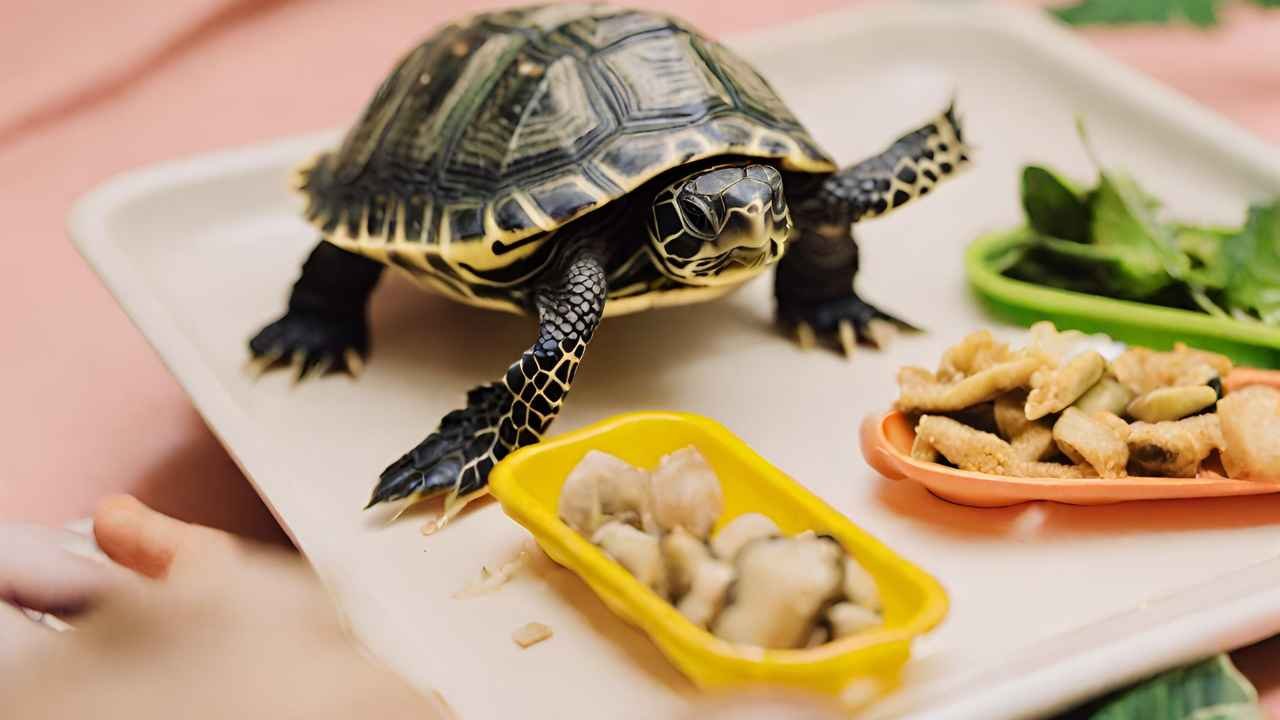
When it comes to feeding baby turtles, timing is everything. Think of it as setting meal times for a growing kiddo. For the littlest hatchlings, a daily feeding is the way to go. As they get older, you can dial it back to every other day. The exact schedule can depend on their species and size, but the key is consistency and moderation.
Figuring out the right amount of food can be a bit like Goldilocks finding the perfect bowl of porridge. You want it to be just right. A good rule of thumb is to offer food that’s roughly the size of their head. It’s enough to fill them up without overdoing it. Overfeeding can lead to health problems and a messy habitat, so keeping an eye on their portion sizes is crucial.
5. Safe Foods and Foods to Avoid
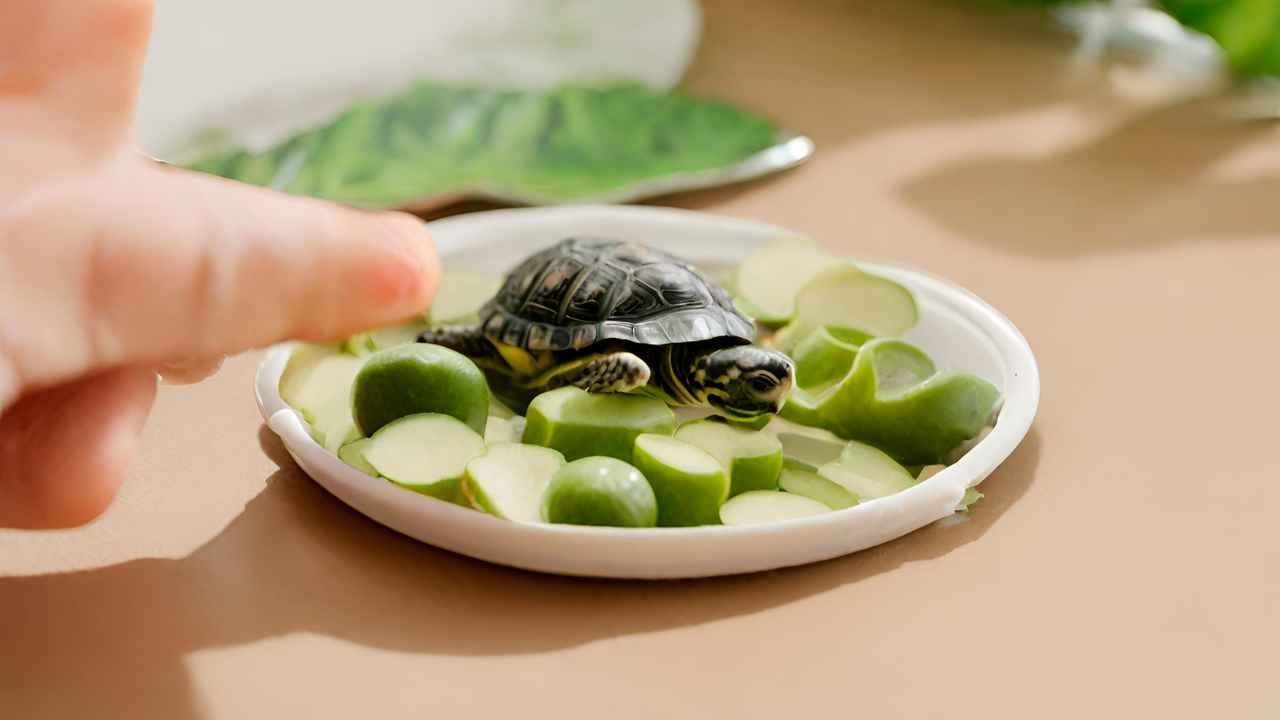
Now, onto the menu. For safe and nutritious foods, think fresh and natural. For our herbivorous and omnivorous friends, dark leafy greens like kale and dandelion greens are fantastic, as are small pieces of fruits like berries and melon. Carnivorous turtles will do well with a variety of insects and worms, such as crickets and earthworms. These foods are packed with the nutrients baby turtles need to thrive.
However, not everything in the fridge or garden is turtle-friendly. Avoid feeding them dairy products, like cheese or milk, as turtles can’t digest lactose. Also, steer clear of processed foods, sugary treats, and anything high in fat. These can cause health issues, from obesity to shell deformities. And remember, while some human foods are safe in small amounts, it’s best to stick to a diet that mimics what they’d find in the wild.
Choosing the right foods and sticking to a proper feeding schedule are like laying down the foundation for a healthy, happy turtle life. It’s all about providing a balanced diet that supports their growth and development, ensuring they can enjoy a long and adventurous life by your side.
6. Supplements and Vitamins
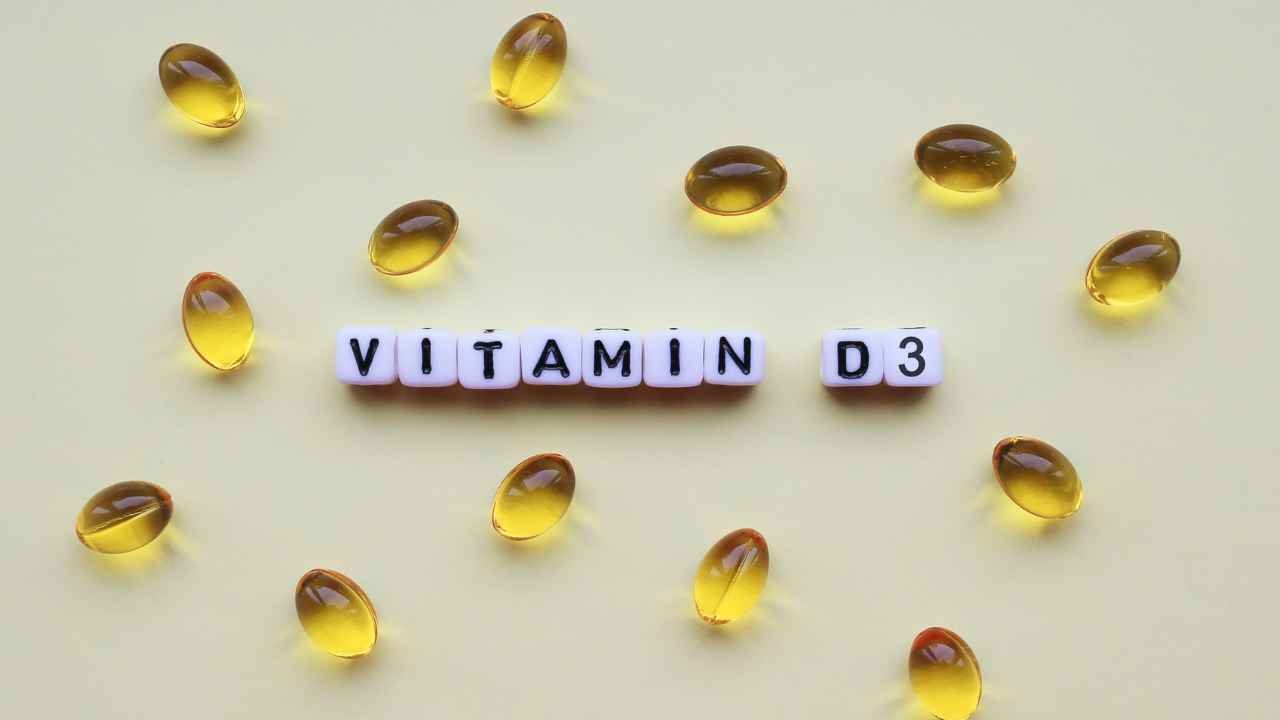
Just like us, baby turtles sometimes need a little extra help in the nutrition department. Supplements, especially calcium powder, play a vital role in their diet. Why? Because calcium is crucial for building strong bones and a hardy shell. Sprinkling a bit of calcium powder on their food can make a big difference, especially for those not getting enough from their diet alone.
Then there’s the sunshine vitamin – vitamin D3. Turtles need access to natural sunlight or UVB light to synthesize this essential nutrient. It helps them absorb and use the calcium they consume. Without enough vitamin D3, all that calcium won’t do them much good. Think of it as the key that unlocks the door to calcium’s benefits.
7. Common Feeding Mistakes to Avoid
Feeding baby turtles might seem straightforward, but there are some common pitfalls to avoid. Overfeeding is a big one. It’s tempting to give those cute faces a little extra, but too much food can lead to obesity and water quality issues, not to mention it can make your turtle dependent on you for food, which isn’t ideal for their wild instincts.
Variety is the spice of life, and that’s true for turtles too. Sticking to the same food day in and day out can lead to nutritional deficiencies. Mixing up their diet with a range of safe, nutritious foods ensures they get all the vitamins and minerals they need to grow strong and healthy.
9. Conclusion
Understanding what baby turtles eat is more than just a part of pet care; it’s a commitment to their health and well-being. These tiny creatures rely on us to provide them with the right nutrition, environment, and care to thrive. By offering a balanced diet, the right supplements, and avoiding common feeding mistakes, we can ensure our shelled friends have the best start in life.
Let’s take this knowledge as a foundation for responsible pet ownership. Continue researching, learning, and consulting with reptile experts to keep up with the best practices in turtle care. Together, we can make a significant difference in the lives of our baby turtles, ensuring they grow up to be happy, healthy, and strong.

